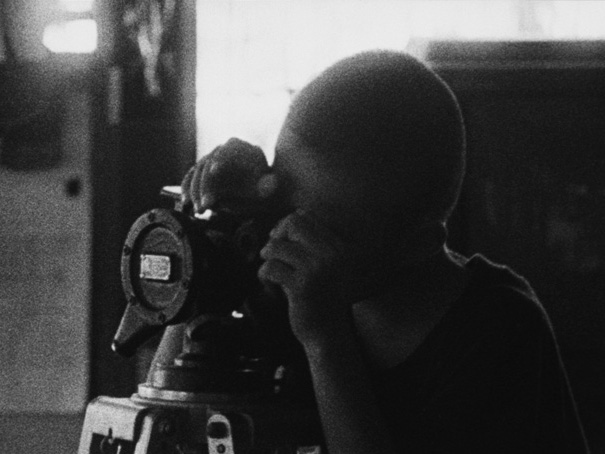
Inspired by the Surrealist concept of the exquisite corpse game, the film crew travels from village to village in Thailand, asking various people they encounter to build upon a tale and advance its storyline in whatever way they like, each one picking up where the previous one left off. The story is acted out and these scenes are interspersed with the interviews in order to chart the collective construction of the fiction.
EN
“Once upon a time...”
« Il était une fois... »
Opening title of the film
“Now, do you have any other stories to tell us? It can be real or fiction.”
« Vous avez une autre histoire à nous raconter ? Réelle ou imaginaire. Réfléchissez.
Comment ça, réelle ou imaginaire ? »
Apichatpong off-screen to the first storyteller in the film
“My story is not really connected.”
« Mon histoire n'est pas très cohérente. Je viens de l'inventer. »
One of the storytellers
“One day I went to the Art Institute of Chicago. They have a very good collection of exquisite corpse drawings of the French Surrealists. What they did was, they have a piece of paper, the first person draws a picture and then folds the paper. So what the next person will see is just a line that continues from the first drawing and then that next person draws, folds and passes it on to the other. Afterwards, when they unfold the paper, you discover this random and continuous image that orginated from the same line. I was so fascinated by this idea. For them, it was a kind of fun and relaxed way to pass time in the cafe but at the same time you create something. So I thought, well, maybe I would like to try this in a cinematic form and I developped this idea of the film's unrelated contributors. This is how I came to the documentary format of going to approach people in various parts of the country. (...) [Eventually,] we had to stop the film somewhere, so we decided to stop at the place in the south where the camera broke down. The last frame is the last capture from this camera, and in a way also a documentation of the limitation of the medium.”
Apichatpong Weerasethakul1
“Mysterious Object has most frequently been called a documentary, though of what is not entirely clear; of its own making, of a national rural Unconscious, perhaps. Certainly, there is an observational, a notational quality to its portrait of the various people, young and old, whose responses to the Dogfahr story – spoken, sung, written, signed – reveal both the pungency of oral folk tale and the knowingness of modernist narrative, and the film functions simultaneously as document and fiction, portrait of a country and account of its collective dream world. But Apichatpong has rejected, quite utterly, the very notion of documentary: ‘I don’t believe in documentary as it is viewed formally. I don’t believe in reality in film. For me there’s no reality, because filmmaking is a very affected medium. So even what you call documentary is not representing the truth, because it’s too subjective and you can’t create a film to just look at certain things. So I think the films are just my expression of my life, but it doesn’t necessarily mean the truth, or a kind of assimilation of appreciation of being alive. But I wouldn’t call it documentary.’
The director hovers over his creation, just out of sight but not always of hearing, his artful manipulation of the framed and framing elements suggesting something like omniscience, even as the film assumes the manner of the collective and haphazard. If Mysterious Object is a documentary, it certainly qualifies as ‘affected’ and ‘subjective,’ as Joe [Apichatpong Weerasethakul] suggests, its many-handed making finally subsumed into a single consciousness and style.”
James Quandt2
- 1“Interview with Apichatpong Weerasethakul (8'16),” Extra on Plexifilm's 2003 DVD release of Mysterious Object at Noon.
- 2James Quandt, “Mysterious Object at Noon,” in Apichatpong Weerasethakul, ed., James Quandt. (Vienna: FilmmuseumSynemaPublikationen, 2009), 35-36.

